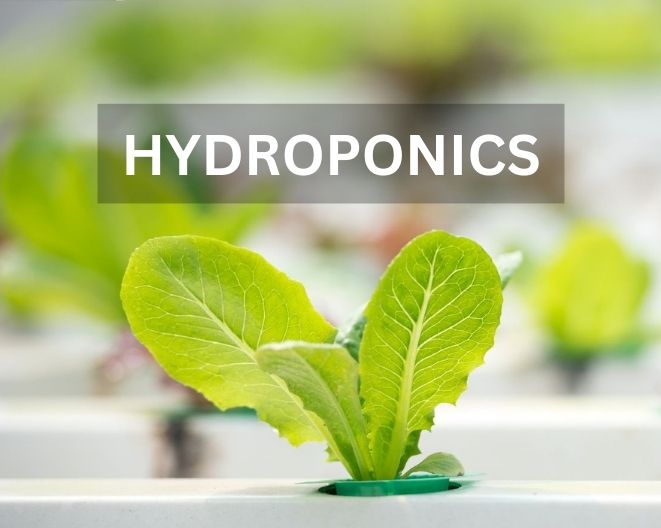In the modern agricultural realm, the vertical hydroponic garden stands as a beacon of innovation, reshaping our understanding of traditional soil-based farming methods. This article dives deep into the transformative impact of vertical hydroponics in commercial farming, shedding light on its myriad benefits and the bright future it heralds for sustainable food production.
Unraveling the Vertical Hydroponic Garden
The advent of the vertical hydroponic garden marks a transformative shift in agricultural practices, blending innovation with sustainability. By leveraging vertical space and soil-less cultivation techniques, this system offers a glimpse into the future of efficient farming. Delving deeper, let’s explore the key facets that make it a game-changer:
Conceptual Breakthrough:
The vertical garden redefines traditional farming boundaries by introducing a stacked cultivation approach.
Optimized Space Utilization:
Instead of spreading out horizontally, this system efficiently harnesses vertical space, ideal for urban farming and land-constrained areas.
Soil-Less Cultivation:
Hydroponic plants flourish without soil, obtaining essential nutrients directly from nutrient-rich water solutions.
Accelerated Growth Dynamics:
The vertical arrangement promotes faster growth rates, ensuring bountiful yields in limited spaces.
Geographical Adaptability:
Suitable for diverse settings, from bustling cities to remote regions, highlighting its universal applicability.
Technological Integration:
The incorporation of advanced systems ensures automated nutrient delivery, precise environmental controls, and optimal growth conditions.
Future-forward Approach:
As a pinnacle of agricultural innovation, the vertical garden heralds a sustainable and efficient farming paradigm for the future.
Essential Elements of Vertical Hydroponics
Vertical hydroponics, with its innovative design and efficiency, thrives on specific foundational components that ensure optimal plant growth and sustainability. Let’s delve into the core elements that characterize this advanced farming technique:
Nutrient Solution:
At the heart of vertical farming lies the nutrient solution, a carefully formulated mixture of vital minerals and elements dissolved in water. This solution acts as the lifeblood of a hydroponic plant, ensuring it receives all the essential nutrients required for robust growth. By bypassing soil and delivering nutrients directly through this solution, plants can absorb what they need efficiently, fostering healthier growth and higher yields.
Growing Medium:
In the absence of traditional soil, the choice of a suitable growing medium becomes crucial. Vertical garden often employs inert materials like perlite, coconut coir, or rock wool. These mediums not only provide structural support to the plant’s root systems but also ensure efficient absorption of the nutrient solution. Their porous nature allows for optimal aeration and drainage, creating an environment where roots can thrive and absorb nutrients effectively.
Water and Nutrient Delivery:
Efficient nutrient delivery is a cornerstone of successful vertical hydroponic farming. Advanced systems are designed to circulate the nutrient solution, ensuring consistent and precise delivery to plant roots. Whether through drip systems, nutrient film techniques, or aeroponics, the goal remains consistent: to provide plants with the right balance of nutrients they require at each growth stage. This targeted delivery mechanism minimizes waste and maximizes plant health.
pH and EC Monitoring:
Maintaining a balanced environment is pivotal in hydroponics. pH levels dictate nutrient availability, while electrical conductivity (EC) measures the nutrient concentration in the solution. Continuous monitoring of these parameters ensures that plants receive an optimal nutrient mix. Systems equipped with sensors and automated controls allow growers to make real-time adjustments, ensuring plants remain in their ideal growing conditions. Proper pH and EC management not only fosters healthier plants but also safeguards against potential nutrient imbalances or deficiencies.
Advantages of Embracing Vertical Hydroponic Garden
The shift towards vertical garden heralds a transformative approach to modern agriculture. By merging innovation with sustainability, these systems present numerous advantages that redefine farming paradigms. Delving deeper, let’s explore the multifaceted benefits of this forward-thinking cultivation method:
Precision in Nutrient Delivery:
Vertical gardens excel in delivering nutrients with unparalleled precision. By bypassing soil, these systems provide hydroponic plants with the exact amount of nutrients they require, ensuring optimal growth rates, healthier plants, and increased yields. This precision minimizes nutrient wastage and ensures that plants thrive in a balanced and nutrient-rich environment.
Water Conservation:
In an era marked by escalating water scarcity concerns, a hydroponic vertical garden emerges as a champion of water conservation. These systems utilize water more efficiently than traditional farming methods, as they recirculate nutrient solutions. By minimizing water wastage and optimizing usage, vertical plantation addresses sustainability challenges, making it a viable solution for regions grappling with water shortages.
Optimized Space Utilization:
The vertical orientation of hydroponic gardens unlocks unparalleled space efficiency. This design allows for the stacking of multiple layers of plants, maximizing yield per square foot. In densely populated urban environments or regions with limited arable land, vertical hydroponics becomes a game-changer, enabling agricultural production without compromising on space.
Accelerated Growth & Yield:
Vertical hydroponic systems supercharge plant growth rates. By providing consistent access to nutrients, water, and optimal growing conditions, these gardens foster accelerated growth cycles. The result? Bountiful harvests in shorter time frames, make vertical hydroponics a compelling alternative to conventional farming practices.
Adaptability to Soil Challenges:
One of the standout advantages of vertical hydroponic gardens is their independence from soil quality. Whether faced with degraded soil, contaminated terrains, or challenging geographical conditions, these systems thrive. Their soil-less nature ensures consistent plant health, irrespective of external soil-related challenges, offering a versatile solution for diverse agricultural landscapes.
Consistent Production:
Seasonal fluctuations pose challenges to traditional farming. However, a hydroponic vertical garden transcends these limitations. By providing a controlled environment, these systems ensure consistent production year-round. This consistency not only guarantees food security but also offers economic stability, reducing dependency on seasonal variations and external factors.
Challenges on the Vertical Hydroponic Horizon
As vertical hydroponic systems gain traction and recognition for their myriad benefits, it’s essential to acknowledge the challenges and hurdles that accompany this innovative farming approach. While the advantages are compelling, addressing these challenges is crucial for the widespread adoption and sustained success of vertical gardens. Let’s delve into some of the prominent challenges:
Initial Investment Costs:
Setting up a vertical hydroponic system demands a considerable upfront investment. From infrastructure development to acquiring specialized equipment and technology, the initial costs can be prohibitive for many aspiring farmers, particularly those operating on a smaller scale.
Technical Expertise Requirement:
Successful implementation and management of vertical hydroponic gardens necessitate a deep understanding of hydroponic principles, nutrient management, and system maintenance. The learning curve can be steep, requiring continuous training, education, and hands-on experience.
Energy Consumption:
Maintaining optimal conditions within vertical hydroponic systems, especially in controlled environments like indoor settings, can lead to increased energy consumption. Artificial lighting, heating, cooling, and ventilation systems contribute to elevated operational costs and environmental concerns related to energy use.
System Failures and Vulnerabilities:
Like any agricultural system, vertical hydroponic gardens are susceptible to technical failures. Issues such as pump malfunctions, nutrient imbalances, or system leaks can jeopardize crop health rapidly. Implementing robust monitoring systems, redundancy measures, and regular maintenance routines is essential to mitigate these risks.
Scalability Concerns:
While vertical hydroponics excels in space efficiency, scaling operations can present logistical challenges. Expanding vertically requires careful planning to ensure consistent nutrient and water delivery, adequate lighting, and optimal plant spacing, among other considerations.
Market Acceptance and Consumer Perception:
Introducing produce grown in vertical hydroponic systems to consumers requires addressing potential skepticism or misconceptions. Ensuring transparency about cultivation practices, nutrient sources, and sustainability practices is vital to building consumer trust and acceptance.
Innovations Paving the Way for Vertical Hydroponics
The trajectory of the hydroponic vertical garden is shaped significantly by ongoing innovations, each pushing boundaries and refining the methodology for enhanced efficiency and sustainability. As this agricultural approach continues to captivate interest and investment, several groundbreaking innovations are paving its path forward:
Advanced Automation Systems:
Modern vertical hydroponic setups are integrating sophisticated automation technologies. These systems monitor and adjust crucial parameters like nutrient delivery, pH levels, and environmental conditions in real-time, ensuring optimal growth conditions and minimizing manual intervention.
LED Lighting Solutions:
The evolution of LED lighting technology has been a game-changer for vertical hydroponics. Tailored light spectrums can mimic natural sunlight, promoting photosynthesis and growth while optimizing energy consumption. This innovation ensures consistent crop quality and yield throughout various growth stages.
Recirculating Nutrient Solutions:
Innovations in nutrient solution management focus on optimizing recirculation systems. Advanced filtration and monitoring technologies enable the efficient reuse of nutrient solutions, reducing waste and ensuring plants receive a consistent and balanced nutrient supply.
Sustainable Growing Mediums:
The quest for eco-friendly and sustainable growing mediums is driving innovation. Researchers and growers are exploring alternatives to traditional mediums, such as coconut coir or rock wool, focusing on biodegradable options that reduce environmental impact without compromising plant health.
Data Analytics and AI Integration:
Harnessing the power of data analytics and artificial intelligence (AI), a hydroponic vertical garden is entering a new era of predictive and adaptive cultivation. AI algorithms analyze vast datasets, offering insights into optimal cultivation practices, resource management, and yield optimization, fostering a data-driven approach to farming.
Vertical Farming Infrastructure Design:
Innovations in vertical planter infrastructure are enhancing space utilization and scalability. Modular designs, vertical stacking solutions, and optimized layouts maximize growing space, facilitate efficient workflow, and accommodate diverse crop varieties, driving productivity and versatility.
In essence, these innovations are not just enhancing the efficiency and productivity of vertical gardens but also redefining their potential. As research and development continue to flourish, the future of vertical plantation appears brighter than ever, promising a sustainable, efficient, and resilient agricultural paradigm.
Conclusion
The emergence and growth of the vertical hydroponic garden signify a groundbreaking evolution in the realm of agriculture. The tangible benefits, ranging from unparalleled nutrient delivery precision to unparalleled space optimization, illuminate its transformative potential. As we navigate and champion this promising soil-less frontier, advancements in technology and a steadfast commitment to sustainability are poised to surmount existing challenges. In doing so, we pave the way for a renewed agricultural landscape—one characterized by efficiency, sustainability, and a steadfast vision for the future of farming.
FAQs
A: A vertical hydroponic farm is a system where plants are grown vertically in stacked layers without soil, receiving nutrients from water solutions.
A: AI in vertical farming analyzes data to optimize growth conditions, automate tasks like nutrient delivery, monitor plant health, and predict crop yields.
A: The business model of hydroponic farming involves growing plants in nutrient-rich water solutions, typically indoors, to produce crops efficiently for local markets or commercial sales.
A: The objectives include maximizing yield in limited space, conserving water, reducing environmental impact, ensuring consistent crop quality, and promoting sustainable agriculture.
A: Automated robots enhance efficiency by performing tasks like planting, harvesting, and monitoring with precision, reducing labor costs, ensuring consistency, and optimizing resource utilization.





